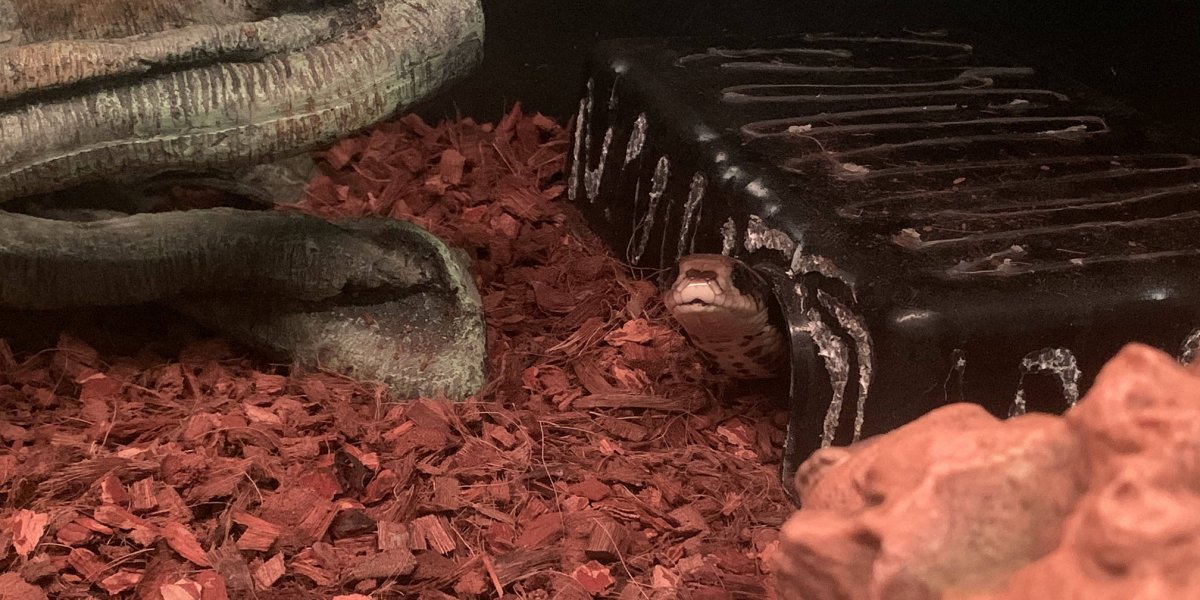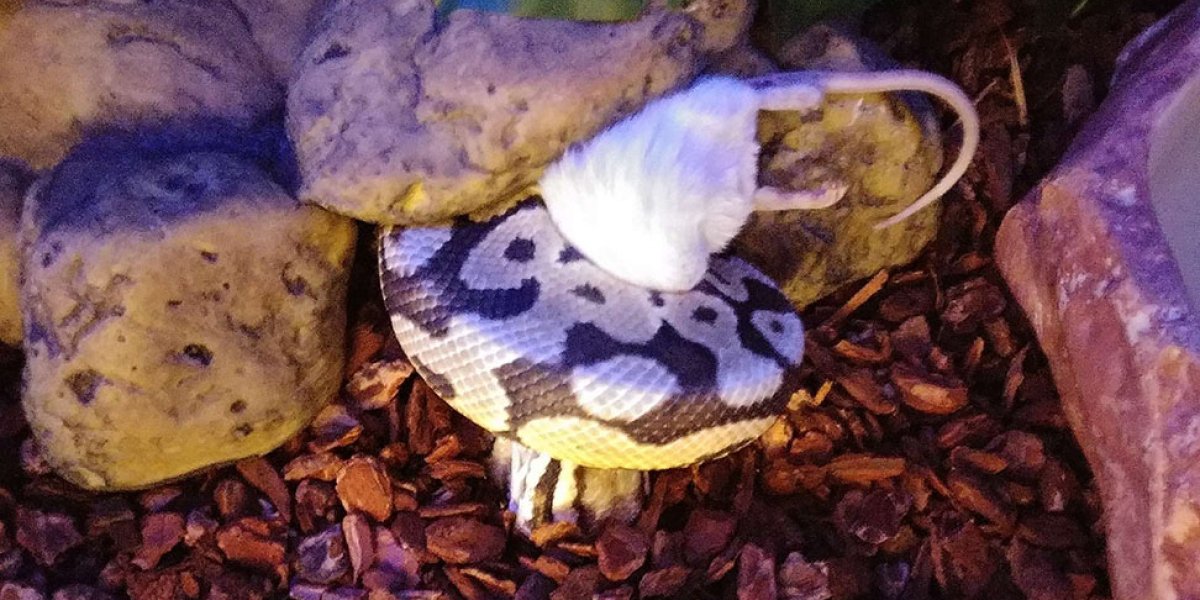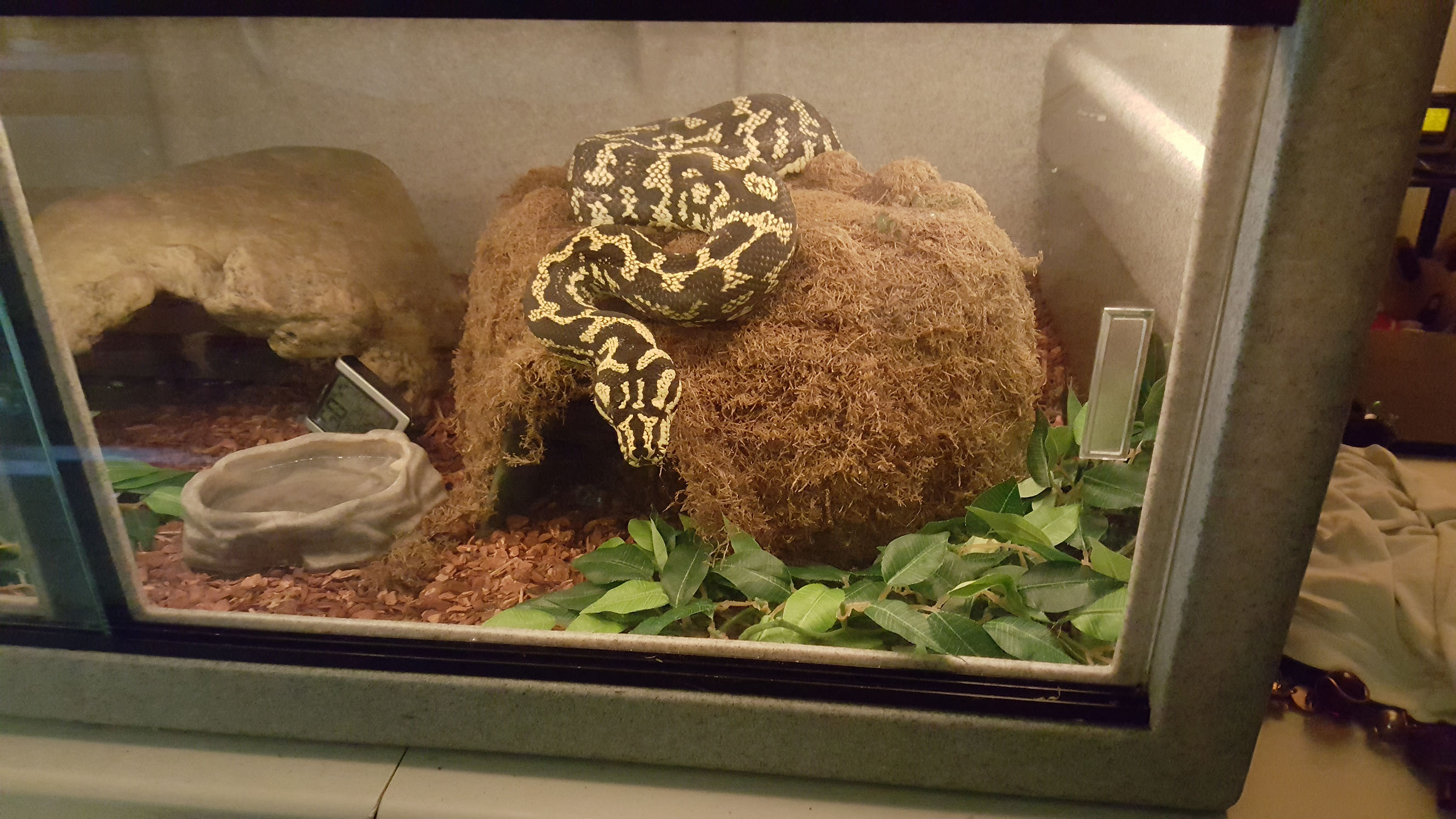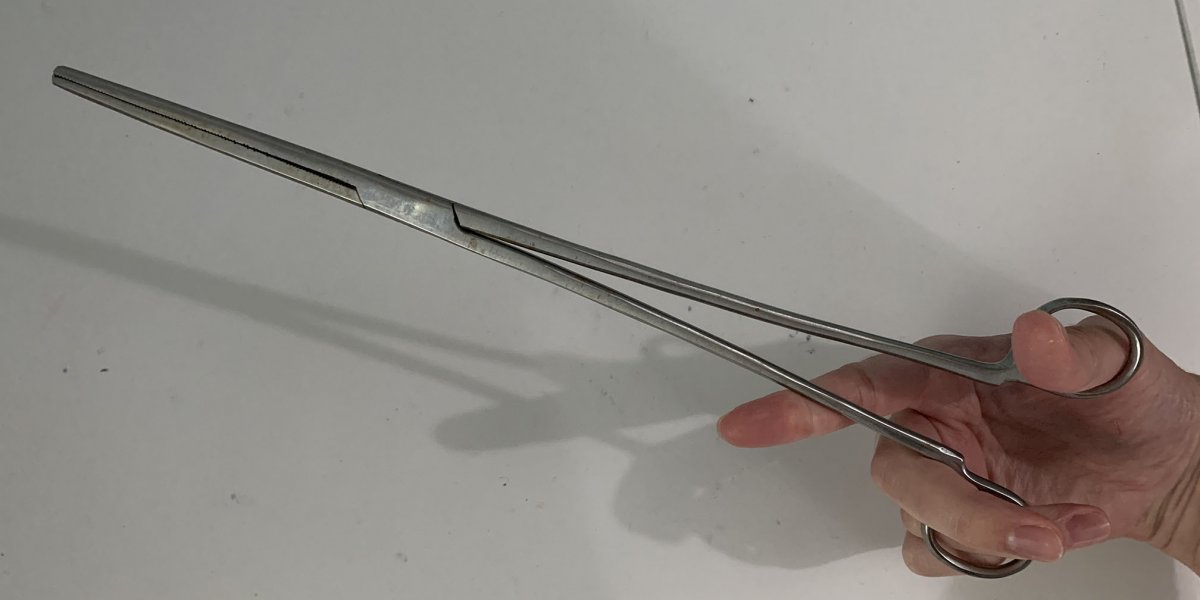Food type
Most snakes eat rodents. There are some exceptions to this, but if you are interested in getting a snake, you should generally expect to feed it live, prekilled, or thawed (previously frozen) rodents.
Carnivorous snakes and other reptiles do best eating whole-food prey—that is, the food must include bone, meat, skin and organs to be nutritionally complete. Some companies, like Reptilinks, offers whole-prey in sausage link form. These can be very handy in offering more variety, different scents, and alternative food to your reptiles. However, keep in mind that your snake may not like your choice of food item, and that all snakes are individuals. If you are getting a new snake, or you are new to snakes, be sure to inquire from the seller what your animal is eating before you buy it.
Food size
Ball pythons and most other captive snake species eat rodents, typically starting out with mice and then progressing to rats as they grow. Generally you want to feed a rodent that is about as big as the snake’s widest girth. You can go up to 1½ times this size, but I advise sticking to the “big as the snake is wide” rule and not deviating too much from it unless you plan on giving the snake a longer break between meals. Large meals put a bigger strain on the snake’s body, make it more vulnerable when moving, and may exacerbate impaction or obesity issues in an at-risk snake.
Remember not to handle your snake for 24 hours after eating, so that it can digest its food. Excess movement or stress can cause a snake to regurgitate its food. After particularly large meals, it may be better to wait 48 hours.
If the prey size is about the same as the snake’s middle, they should eat about every 7 days, at least while they are growing. Obviously rodent size may vary, and your snake may be in between sizes at some point, but this is the general idea. I will discuss the nuances of feeding frequency and amount in another article.
It is important to regularly check your snake’s weight, especially while they are young and growing. You should weigh them when you first get them, before settling them into their new enclosure. Then, monitor them. You should see a young snake gaining weight every month. If they are not gaining, you may not be feeding them enough.
You will find some exceptions here if the snake’s age is unknown or if the animal was mistreated/underfed. In this case, using body condition and deferring to an experienced reptile veterinarian may assist in determining a weight plan for your snake.
An adult snake that is finished growing doesn’t need to gain weight and can eat less often (most of my adult ball pythons get a small rat about every 10 days). Larger, heavy bodied snakes, like boa constrictors and blood pythons may only need to eat ever 2 weeks, depending on prey size.
Again, you can make adjustments to food size and frequency by weighing your animal regularly. Some of these animals will self-regulate, and refuse food when they’ve had enough, but not all. An overweight snake will start to look like a sausage.
Frozen and live
Snakes are all individuals. They may prefer live or frozen-thawed, rats or mice. It is important to get this information from the breeder when purchasing your snake, especially if YOU have a preference for certain food items. You can get many snakes to switch, but again, this depends on the individual snake.
Always ensure that frozen rodents are completely thawed before offering them to a snake (These are called frozen-thawed rodents or FT rodents). I do this by placing them in a ziploc bag and completely submerging in a dish of warm water, and refresh the water every 10-30 minutes. Smaller rodents will take less time to thaw out. If the bag fails, I pat the rodent dry and will sometimes fluff with a hair dryer (keep it about eight inches away from the rodent or it will overheat or go flying across the room). Offer FT rodents on tongs.
For live rodents, if the rodent is old enough to eat on its own I generally place it in a separate container on its own and offer it water along with fresh veggies, unsalted nuts and oats. I give it the opportunity to eat and drink for a couple of hours before it becomes a meal. If the rodent is old enough to have its eyes open, never leave it alone with the snake, and never leave it in the enclosure overnight. Rodents can do massive damage to a snake (let alone your equipment, if it gets its teeth on wires).
Feeding techniques
For frozen-thawed (FT) rodents, how you offer can be very important. First, the rodent should be fully thawed, warm and soft (see above). You can hold it by its feet on tongs—this gives the biggest area for the snake to grab. For snakes that have a difficult time hitting their target, it may be better to hold by the scruff of the rodent or under the rodent’s thigh, so as to point the face of the rodent directly at the snake for a better grab. When holding the rodent on tongs, try to give the tongs as small a footprint as possible so the snake does not strike them by accident.
For snakes that don’t take the rodent right away, it may be helpful to “dance” the rodent along the ground, wiggle it or move in a small up-and-down motion a few inches away, in front of the snake. If they don’t take it after a few minutes of this, give them a break and try again later. I would re-fluff the mouse with a hair dryer.
A fearful snake may strike and eventually realize the thing it is striking at is soft and edible. However, a snake that is very fearful may strike without trying to grab, may only try to scare you away, or may curl up into a ball (Ball pythons in particular are known for this, hence the name). Watch your snake carefully and try to be interesting rather than frightening.
Some snakes respond well to being touched on the body with the food item. Others may find this horribly offensive.
Sometimes you can leave the FT rodent with the snake, particularly after getting its attention with the rodent and then backing off. For arboreal snakes, I try to leave it on a perch or somewhere it is visible. A nervous snake may accept food this way, but after an hour passes I generally assume it is not going to happen.
Again, watch your snake’s body language carefully. Be sure to give him (and yourself) breaks when you need them.
In or out?
For the most part, I strongly recommend feeding ball pythons and other ambush predator snakes inside their enclosure, at night, and allowing them to strike from within their hide. I definitely recommend feeding green tree pythons and other arboreal ambush predators in their own enclosure at night. Moving them to feed is unnecessary and stressful, and the transportation process can result in a bite from an overzealous snake.
Note: If you must feed an arboreal snake in a separate enclosure to limit the amount of moving the food can do, do everything you can to keep the perch as-is so you do not have to deperch the snake.
Many pythons are ambush predators by nature and naturally hunt in evenings or early morning before the sun is up. With this practice, they will sit and wait for food when the sun falls; I do not ever attempt to handle them at this time of day. That way there is no confusion.
Often, they will become acclimated to this and stick their face out of the hide after dark and wait for food. If not, I waggle my FT mouse outside the hide entrance. They will detect the scuffling and come out and strike (A live mouse will do its own scuffling). When first introducing a snake to this method, you may need to pick up the hide or lift it so you can introduce the FT rodent. Do not push a snake that is starting to ball or show other signs of distress when trying this; instead, appeal to their curiosity and try to lure them out.
Diurnal snakes
We have had a few snakes that are most active during the day. Our false water cobra, for instance, is most active in the morning after the sun is up. We offer food on tongs around this time, still offering at around the same time of day for consistency. He will wait with his face sticking out of his hide every morning for a potential food item. When it comes time to handle diurnal snakes, we use a snake hook to lift a hide or initially touch the snake while closely monitoring the snake’s behavior. Most of the time, the snake will wait to see what you are doing. You can see the behavior shift when they realize it’s handling time and not feeding time. This can be a great disappointment on the part of your snake, but usually passes without any striking or injury on any party, particularly if this is always the way you begin handling sessions.
Burrowing species
Our tricolor hognose is almost always buried a few inches into his substrate. Therefore, it is often difficult to locate him to offer food directly without putting our hands on him first. We remove him to a separate container to feed.
In the past we have also offered a plate on the substrate in the enclosure for buried ambush snakes (the plate is there to reduce the risk of ingested substrate). Additionally, if the prey item is dry, dragging the prey along the ground and feeding in the enclosure may work for some buried ambush snakes. As always, your mileage may vary.




